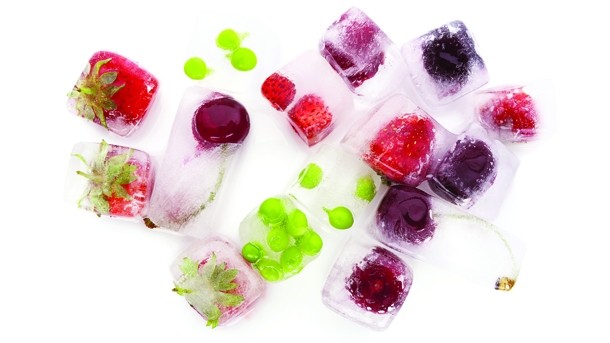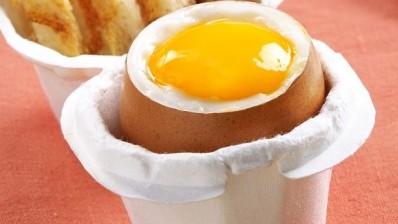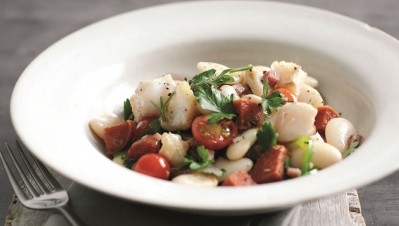Frozen food: thawing profit opportunities

Using frozen ingredients can save the average pub 15% on costs per year, according to experts, but the benefits don’t end there and the subject is well worth exploring.
Food-related costs such as preparation and labour can be slashed by using frozen products and ingredients, says the British Frozen Food Federation, which conducted a study in 2013 of a ‘real’ pub. The study compared the top 10 most popular meals sold over the course of a week using both fresh and frozen ingredients.
Staffing costs dip by a third (32%) when frozen ingredients are used, due to the low levels of preparation and cleaning up needed, as well as the need for fewer highly-skilled workers.
Utility costs are also lowered by 4.5% when frozen ingredients are used. As the majority of frozen food is pre-portioned and pre-prepared, it tends to takes up less storage space, as well as requiring lower levels of preparation.
Soaring pancake sales
From cost-saving to cost-making, sales of American pancakes by frozen food distributor Central Foods are soaring and the company puts this down to the popularity and versatility of the product – over the past five years sales of its pancakes have risen by 74.3%.
Central Foods managing director Gordon Lauder says: “American pancakes are a really popular product in the UK.
“They are versatile, can be used for sweet or savoury items and are perfect for meal occasions throughout the day. It takes just minutes to defrost and serve them.
“We knew the Crepe Cuisine pancakes were going down well with foodservice operators, but we were staggered when we realised just how many we had sold last year.
“The trend for American pancakes shows no sign of waning and we are expecting customers to continue tucking into them for the foreseeable future.
“They tap into the comfort food trend known as the ‘taste of yesterday’, providing memories of childhood. In these uncertain political times, it’s a trend that’s going down well in foodservice.”
Pancakes are not the only product consumers are set to demand. Lauder adds: “Another trend for 2017 is an upsurge in the use of sweet versions of savoury products and savoury versions of sweet products, so it’s something that imaginative operators can consider with pancakes, which provide a great base for different toppings.”
Looking into the ‘pond’
While Central Foods wants operators to take influence from across the Pond, Alaska Seafood suggests looking into it and has issued guidance for pubs to ensure their frozen fish offer stands up against its fresh counterparts.
The company has urged operators to ensure the fillets are bright and free of frost before using. Frosting indicates the temperature has varied in the freezer system, and could mean the fish is damaged.
Chefs should always expect a light water glaze on the fish. This protects it from freezer burn, especially if cooking from frozen. It can be removed by running under a lukewarm tap for 30 seconds and patting dry on a paper towel.
Lastly, the seafood company says the pack should be checked for a ‘frozen at sea’ or another genuine logo. This denotes the product has been frozen at sea and its quality will have been maintained.
So suppliers have issued tips for operators, but what do pub owners and chefs do with their produce and why?
Chef-patron of Top 50 Gastropub Parlour in Kensal Green, north-west London, Jesse Dunford-Wood says that although operators have varying ideas on how to present their produce, frozen food can be adapted accordingly.
He explains: “Depending on your operation, you should aspire to have speed, good costs and be consistent, but different people have different
levels of expectations and ideas on quality and points of difference.”
He outlines how the majority of his pub’s produce is fresh but that utilising different parts of ingredients by freezing them in-house can reduce food waste.
He adds: “We use fresh fish, it all comes in fresh. But take cod, for example, we fillet it and then use the belly and tails as fish fingers for the kids, which we freeze until they are needed.
“Take salmon. Smoking is used for taste and preservation. But it is a three-day process and we have lots of bellies and tails which we need to freeze.
“Things like fish, which is really important to be fresh, can get frozen on-board a ship, in the middle of nowhere, hours after it was killed, meaning it has not been kept out for weeks on end.”
Frozen versus fresh
From one operator to another, Andrew Fishwick, who ran the multi award-winning Truscott Arms in Maida Vale, west London, weighs up what customers want when it comes to frozen versus fresh.
“Frozen has a vital place in pubs. With the economics on any food offering in pubs, it definitely has to play a part,” he says.
Though economics plays an important part in running a business, there is an ongoing demand for knowing where produce comes from and its ‘story’ but operators can turn this on its head, he claims.
Fishwick says: “Rather than being location-based, operators should be looking at sourcing. There’s a huge financial benefit to the kitchen by using frozen, particularly with something like fish.
“One being the longevity of the product. You don’t want to have prepped 40 bits of beautiful cod fillet and only 10 people come for dinner that night, or no one fancies cod and everyone orders the lamb.
“Frozen allows you to prep for what you need, to buy great products and to make them last longer.”
Fishwick concedes there is a stigma attached to frozen food and a preconception that it is low quality, which he says must be broken.
He adds: “Frozen peas, for example, are an amazing thing. Making a pea purée out of frozen peas is wonderful – the colour of them and the taste is better.
“But, we should be informing customers about the things that make a difference to them such as the taste, the quality, the sustainability and the nutritional value.”
All this means frozen food can reap many benefits that fresh cannot deliver, such as saving money and time. But the stigma around it must be broken.





